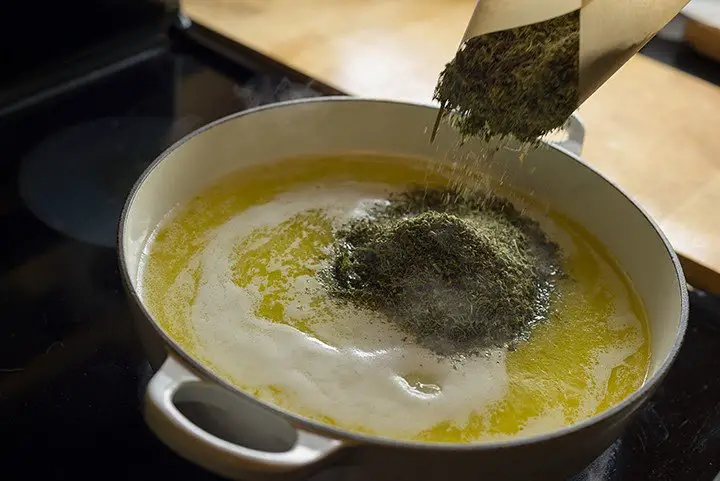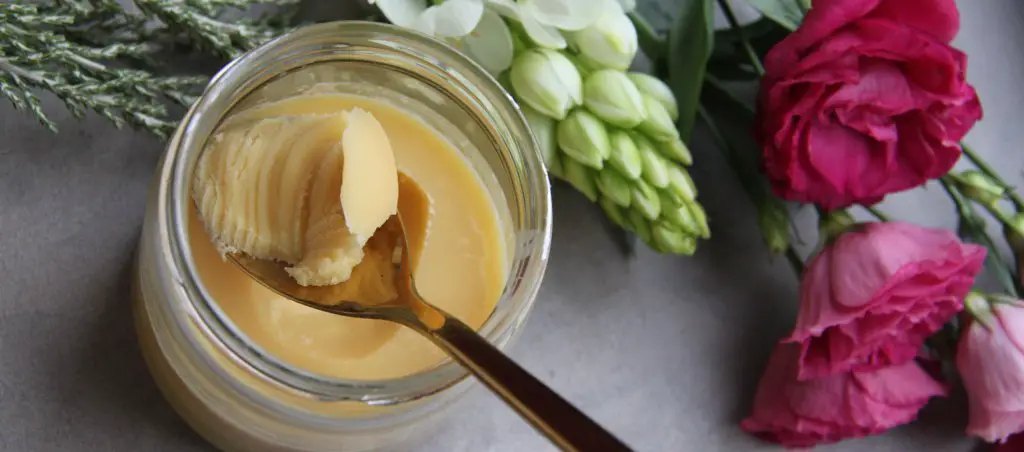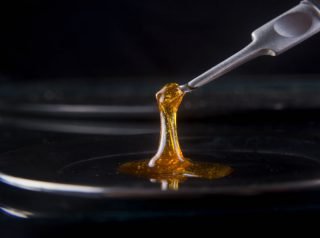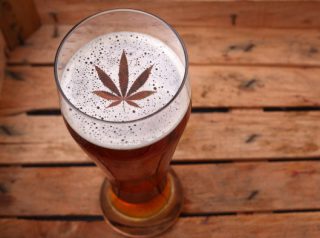Infusing cannabis in tasty treats is a delicious way of harnessing its benefits. To achieve this, though, you would have to find a suitable carrier for the cannabinoids to bind with. And since THC and CBD are fat-soluble, butter is an excellent choice.
Page Content
Why Make Cannabutter
So, why would you want to make your own cannabutter instead of buying them if available in a local dispensary?

Purchasing ready-made, ready-to-use cannabutter is convenient – and that is all there is to it. Other than that, it does not give you these benefits:
- The joy of making something yourself, especially if you grew marijuana plants, harvested, dried, and cured the buds.
- It is not only easy-to-make but also cheaper.
- Cheap does not mean inferior quality. As a matter of fact, you can make high-quality cannabutter that has guaranteed purity. In the case of store-bought products – and that includes dried flowers – you have no way of determining if they are free of any contamination. When you make your own, you know exactly what ingredients you used.
Some people may say, if you have the cash, buy from a reputable store. Unfortunately, that is easier said than done.
Take, for instance, dosing with edibles. In 2014, a study focused on the accuracy of dosages and labels in medical marijuana edibles. Of the 75 products tested from 47 brands, only 17% were accurately labeled (Vandrey 2015). Granted that these are edibles, but that also goes to show that most of the labels on all other cannabis products cannot be trusted.
Once you have your own cannabutter, unleash your creativity. There are so many ways you could use it to create edibles.
Cooking With Cannabutter
Butter is a delicious, nutrient-dense, and versatile carrier for cannabinoids. Once infused with THC or CBD, cannabutter can be used to prepare all kinds of edibles – be it baked goods, sweets, snacks, or even savory dishes. In fact, any recipe that calls for oil or butter can be made into an edible by using cannabutter in place of regular butter.
What’s more, it can be made in advance and stored in the fridge for up to six (6) weeks. This means you can quickly whip up any edible you crave as long as you have ready-made cannabutter on hand.
The Art Of Making Cannabutter
Cannabutter can be bought at licensed dispensaries, but it can also be conveniently made at home. You don’t have to be a master chef to make this delish cannabis infusion – it is that easy. All you need is to know the proper techniques and avoid common mistakes.
But before anything else, though, make sure that you are using buds that have undergone the decarboxylation process. Otherwise, you still end up with cannabutter – but devoid of potency.
Ingredients:
- 1/2 oz (14 g) of coarsely-ground decarboxylated marijuana buds
- 1-1/2 cup water
- 8 oz (2 sticks) of unsalted butter
Materials needed:
- Medium-sized saucepan
- Wooden spoon
- Knife
- Kitchen thermometer
- Cheesecloth
Procedure:
- Cut the sticks of butter into smaller pieces so that it would be easier to melt.
- Add and bring the water to a boil in a saucepan, then lower the heat.
- Add butter and stir it well into the water using a wooden spoon.
Note: Mixing water with butter may seem odd since they do not “mix.” But it actually keeps the butter from burning since water has a high heat capacity. It also washes out the unwanted green coloration and herbal flavor of the plant material.
- Once all the butter has melted, add the coarsely-ground decarboxylated cannabis. Stir the mixture thoroughly to ensure that the buds are fully submerged.
Note: Avoid over-grinding the buds into a fine powder. Otherwise, the plant material will be hard to filter, and it will make your cannabutter taste bitter.
- Using the kitchen thermometer, measure the mixture’s temperature and make sure it does not exceed 180°F (82°C). Then, cover the saucepan with a lid and let it gently simmer for four (4) hours.
Note: The key here is to simmer (not boil) the butter, buds, and water over low heat for an extended period. In this manner, the terpenes and cannabinoids could slowly saturate the butter mixture without boiling over or denaturing. It is quite a long process, but definitely worth the wait as the resulting cannabutter tends to be more potent and of higher quality.
- Check and stir the concoction every 30 minutes to prevent the butter from burning. Also, make sure that the temperature stays within the optimal range.
- After 4 hours of simmering, the butter should have a thick and creamy consistency with a somewhat shiny top layer. This indicates that the water has already evaporated from the mixture. All that is left is the THC or CBD-infused butter.
- Turn off the heat and strain the buds using two layers of cheesecloth. Pour the cannabutter into a sterile container.
Note: Do not squeeze the filtered buds just to get that extra juice because it may end up letting the plant material get into the final product. This may give your cannabutter a bitter taste. Instead, leave it be for ten (10) or so minutes and let it drain naturally.
- Let it cool to room temperature. Use it immediately or store it in an airtight container, then keep it refrigerated for up to six months. Make sure no extra moisture gets in to prolong its shelf life.
Dosing With Cannabutter
The potency of your homemade cannabutter depends on several factors. These include how long or how well it was cooked, the THC level of the buds, and so on. Determining the accurate dose per milligram of cannabutter requires laboratory analysis. In other words, it is quite hard to dose at first as it warrants a trial and error approach (unless you can readily have it analyzed in the lab).

In testing the potency of your cannabutter, a half (1/2) or quarter (1/4) teaspoon is a good starting point. Wait at least an hour for the effects to kick in, then adjust the dose as desired. Once you’ve established your personal baseline, you can use this dose in your subsequent edible recipes. Remember, going low and slow is the key to preventing overconsumption and getting the most out of your canna-edible experience.
Citations
Vandrey, Ryan. “Dose and Label Accuracy in Edible Medical Cannabis Products.” JAMA, American Medical Association, 23 June 2015.





